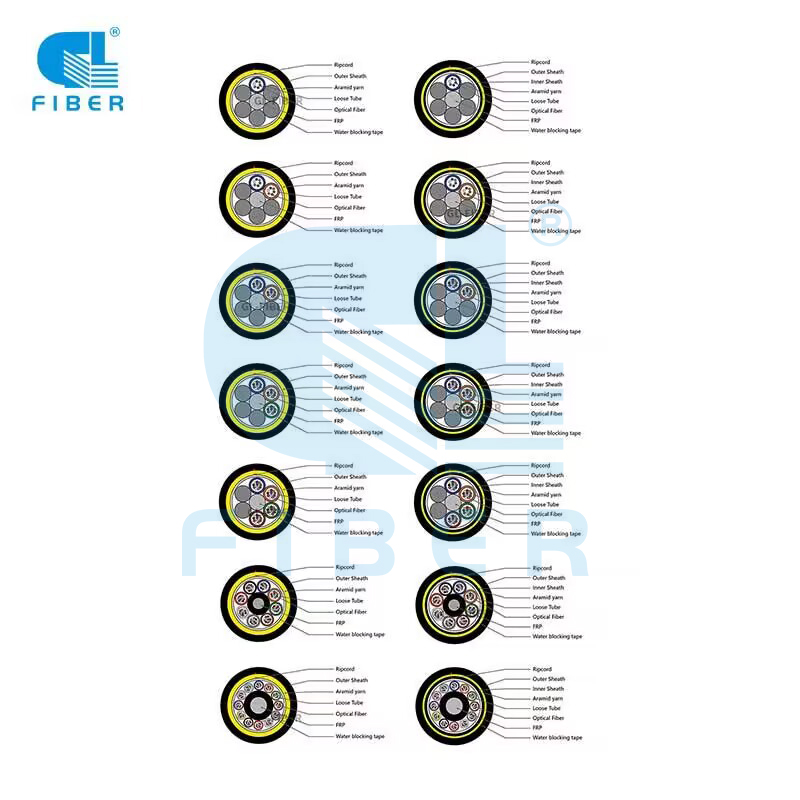Everyone knows that the design of the optical cable structure is directly related to the structural cost of the optical cable and the performance of the optical cable. A reasonable structural design will bring two benefits. To achieve the most optimized performance index and the best structural cost is the common goal of everyone. Generally, the structure of ADSS optical cable is divided into two types: layer twisted type and central beam tube type, and the layer twisted type is more.
What Is ADSS Cable?
ADSS cable is a type of fiber optic cable that is strong enough to support itself between structures without containing conductive metal elements. Both single mode and multimode fibers can be arranged in ADSS cables with a maximum of 144 fibers. ADSS fiber optic cable is designed for outside plant aerial and duct applications in local and campus network loop architectures from pole-to-building to town-to-town installations. The cabling system that includes cables, suspension, dead-end, and termination enclosures offers a comprehensive transmission circuit infrastructure with high-reliability performance.
The characteristic of the stranded ADSS cable is that it has an FRP central reinforcement, which mainly acts as a central support, and some people call it a central anti-folding rod, but the bundled tube type does not. As for the determination of the size of the central FRP, relatively speaking, it is better to be slightly larger, but considering the cost factor, the bigger the better, there must be a limit here. For the usual layer-twisted structure, the 1+6 structure is generally used, and the 1+5 structure is also used when the number of optical fiber cores is not too many. Theoretically speaking, when the number of structural cores is sufficient, the cost will be reduced by using the 1+5 structure, but if the pipe diameter is the same, the diameter of the central FRP is only a little more than 70% of the 1+6 structure. The cable will be softer, and the bending strength of the cable will be poor, which will increase the difficulty of construction.
If the structure of 1+6 is adopted, the pipe diameter must be reduced without increasing the cable diameter, which will bring difficulties in the process, because the necessary pipe diameter must not be small to ensure that the optical cable has sufficient excess length Therefore, the value must be moderate. Through the comparative analysis of the test results of samples with different process structures, such as the tube with φ2.2, 1+5 structure, and the tube with φ2.0, the cost of 1+6 structure is similar, but this 1+6 structure , the central FRP is relatively thick, which will increase the rigidity of the cable, making the performance of the optical cable more reliable, stronger in safety, and better in roundness of the structure. The choice of this structure and the number of fiber cores in each tube depends on the technology level of each company. Usually, it is better to adopt the layer-twisted type with large number of cores and large span. The excess length of this structure can be relatively larger. It is also the mainstream structure at present, and it is most suitable for trunk lines.


